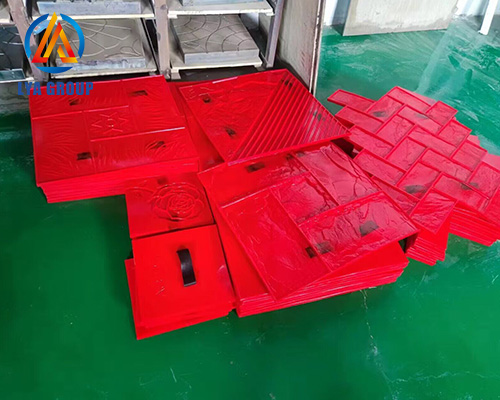How to create concrete stamp projects in cold areas?
News 2024年4月30日 103

Creating concrete stamp projects in cold areas requires some additional considerations due to the lower temperatures. Here are some tips to help you successfully execute concrete stamp projects in cold weather:
Plan for the right weather conditions: Choose a time when the weather forecast indicates a period of relatively mild temperatures. Avoid pouring concrete when temperatures are below freezing or expected to drop significantly within 24 hours.
Use the right concrete mix: Opt for a concrete mix designed for cold weather applications. These mixes often contain additives that help the concrete cure and gain strength even in lower temperatures. Consult with a local concrete supplier or manufacturer for recommendations on the best mix for your specific project.
Pre-warm the concrete materials: Cold weather can significantly impact the setting time of concrete. Pre-warming the concrete materials, including water, aggregates, and cement, can help maintain a more suitable temperature for the concrete mix. Use warm water and store the materials in a heated space before use.
Protect the work area: Ensure that the work area is protected from the cold. Use temporary enclosures, plastic sheeting, or heated tents to create a controlled environment that can help maintain the temperature around the concrete during the curing process.
Insulate the concrete: Insulating the concrete after pouring can help retain heat and facilitate proper curing. Cover the freshly poured concrete with insulating blankets or straw to provide a layer of insulation and protect it from freezing temperatures.
Apply a curing compound: Apply a curing compound to the concrete surface after stamping. This compound helps retain moisture and promotes proper curing. It also provides some protection against freezing temperatures.
Monitor the curing process: Regularly monitor the concrete’s temperature and condition during the curing process. Take extra care to prevent freezing by using temperature sensors, thermal blankets, or portable heaters if necessary.
Allow for extended curing time: Cold temperatures slow down the curing process of concrete. Be prepared to allow for an extended curing time compared to the typical timeframes recommended for warmer weather. Follow the manufacturer’s guidelines for curing time and avoid putting excessive stress on the concrete until it has fully cured.
Seek professional advice if needed: If you’re unsure about the specific requirements or techniques for stamping concrete in cold weather, it’s advisable to consult with a professional concrete contractor or engineer. They can provide guidance based on local climate conditions and expertise.
Remember that working with concrete in cold weather requires extra attention and care to ensure successful results. By following these tips and adapting your techniques to the specific requirements of your cold climate, you can create beautiful concrete stamp projects even in lower temperatures.